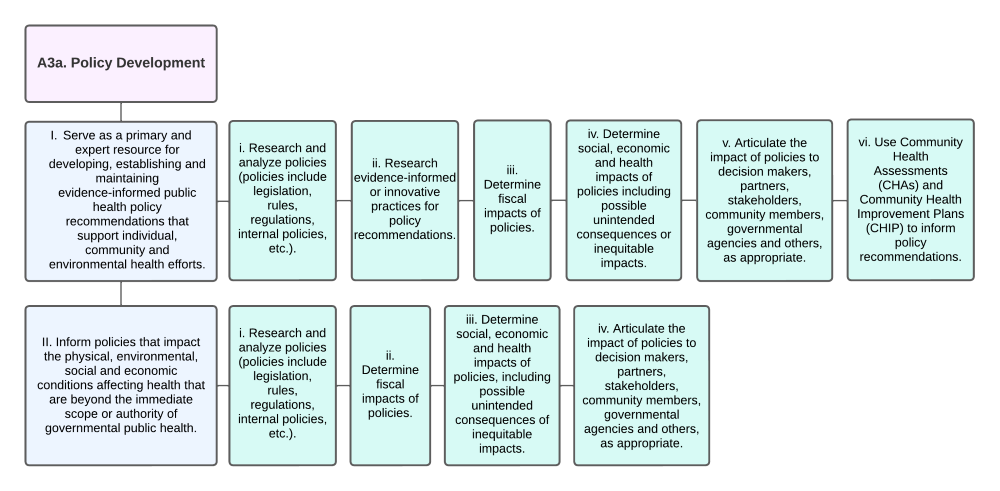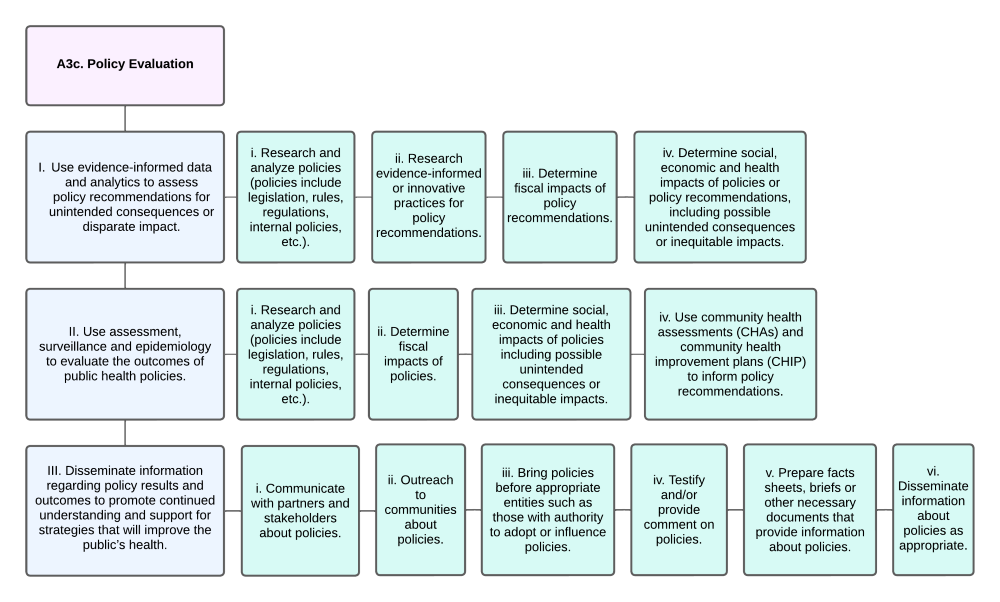A3. Policy Development and Support

Policy Development and Support: Colorado’s governmental public health system will inform and implement policies to meet the community’s changing health needs.
Public health policies will aim to eliminate health disparities, reduce death and disability, and improve environmental quality and health outcomes for all people in Colorado.
Link:
The source Core Public Health Services Operational Definitions Manual 2019 is organized as follows:
|
Functions of Policy Development and Support
A3a. Policy Development
I. Serve as a primary and expert resource for developing, establishing and maintaining evidence-informed public health policy recommendations that support individual, community and environmental health efforts.
i. Research and analyze policies (policies include legislation, rules, regulations, internal policies, etc.).
ii. Research evidence-informed or innovative practices for policy recommendations.
iii. Determine fiscal impacts of policies.
iv. Determine social, economic and health impacts of policies including possible unintended consequences or inequitable impacts.
v. Articulate the impact of policies to decision makers, partners, stakeholders, community members, governmental agencies and others, as appropriate.
vi. Use Community Health Assessments (CHAs) and Community Health Improvement Plans (CHIP) to inform policy recommendations.
II. Inform policies that impact the physical, environmental, social and economic conditions affecting health that are beyond the immediate scope or authority of governmental public health.
i. Research and analyze policies (policies include legislation, rules, regulations, internal policies, etc.).
ii. Determine fiscal impacts of policies.
iii. Determine social, economic and health impacts of policies, including possible unintended consequences of inequitable impacts.
iv. Articulate the impact of policies to decision makers, partners, stakeholders, community members, governmental agencies and others, as appropriate.
A3b. Policy Enactment
I. Partner with community members and stakeholders to build support for evidence-informed policies that promote healthy behaviors and environments for individuals, families and communities.
i. Build relationships with partners and stakeholders related to public health policy priorities.
ii. Collaborate with other entities as appropriate to support public health policy priorities.
iii. Maintain relationships with partners and collaborations to support public health policy priorities including attending relevant meetings and events.
iv. Communicate with partners and stakeholders about policies.
v. Outreach to communities about policies.
vi. Testify and/or provide comment on policies.
A3c. Policy Evaluation
I. Use evidence-informed data and analytics to assess policy recommendations for unintended consequences or disparate impact.
i. Research and analyze policies (policies include legislation, rules, regulations, internal policies, etc.).
ii. Research evidence-informed or innovative practices for policy recommendations.
iii. Determine fiscal impacts of policy recommendations.
iv. Determine social, economic and health impacts of policies or policy recommendations, including possible unintended consequences or inequitable impacts.


